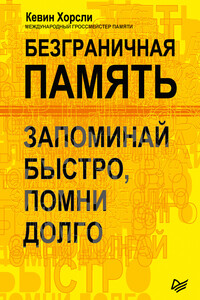Инстинкты и смысл жизни. Почему в нас так много животного - страница 105
Kenrick, D. T., Neuberg, S. L., & Cialdini, R. B. (2010). Social psychology: Goals in interaction (5th ed.). Boston, MA: Allyn & Bacon.
Kenrick, D. T., Neuberg, S. L., Griskevicius, V., Becker, D. V., & Schaller, M. (2010). Goal-driven cognition and functional behavior: The fundamental motives framework. Current Directions in Psychological Science, 19, 63-67.
Kenrick, D. T., Neuberg, S. L., Zierk, K., & Krones, J. (1994). Evolution and social cognition: Contrast effects as a function of sex, dominance, and physical attractiveness. Personality & Social Psychology Bulletin, 20, 210-217.
Kenrick, D. T., Nieuweboer, S., & Buunk, A. P. (2010). Universal mechanisms and cultural diversity: Replacing the blank slate with a coloring book. In M. Schaller, S. Heine, A. Norenzayan, T. Yamagishi, & T. Kameda (Eds.), Evolution, culture, and the human mind (pp. 257-272). Mahwah, NJ: Erlbaum.
Kenrick, D. T., Sadalla, E. K., Groth, G., & Trost, M. R. (1990). Evolution, traits, and the stages of human courtship: Qualifying the parental investment model Journal of Personality, 58,97-116. Special issue on Biological Approaches to Personality.
Kenrick, D. T., Sadalla, E. K., & Keefe, R. C. (1998). Evolutionary cognitive psychology: The missing heart of modern cognitive science. In C. Crawford & D. L. Krebs (Eds.), Handbook of evolutionary psychology (pp. 485-514). Hillsdale, NJ: Erlbaum.
Kenrick, D. T., Sanabria, F., Sundie, J. M., & Killeen, P. R. (2010, January). Game theory and social domains: How fitness interdependencies transform strategic decisions. Paper presented at Society for Personality & Social Psychology, Las Vegas, NV.
Kenrick, D. T., & Sheets, V. (1994). Homicidal fantasies. Ethology & Sociobiology, 14, 231-246.
Kenrick, D. T., & Shiota, M. N. (2008). Approach and avoidance motivation(s): An evolutionary perspective. In A. J. Elliot (Ed.), Handbook of approach and avoidance motivation (pp. 273-288). New York, NY: Psychology Press.
Kenrick, D. T., & Sundie, J. M. (2007). Dynamical evolutionary psychology and mathematical modeling: Quantifying the implications of qualitative biases. In S. W. Gangestad & J. A. Simpson (Eds.), The evolution of mind: Fundamental questions and controversies (pp. 137-144). New York, NY: Guilford Press.
Kenrick, D. T., Sundie, J. M., & Kurzban, R. (2008). Cooperation and conflict between kith, kin, and strangers: Game theory by domains. In C. Crawford & D. Krebs (Eds.), Foundations of evolutionary psychology (pp. 353-370). New York, NY: Erlbaum.
Kenrick, D. T., Sundie, J. M., Nicastle, L. D., & Stone, G. O. (2001). Can one ever be too wealthy or too chaste? Searching for nonlinearities in mate judgment. Journal of Personality & Social Psychology, 80, 462-471.
Kenrick, D. T., Trost, M. R., & Sheets, V. L. (1996). The feminist advantages of an evolutionary perspective. In D. M. Buss & N. Malamuth (Eds.), Sex, power, conflict: Feminist and evolutionary perspectives (pp. 29-53). New York, NY: Oxford University Press.
Kesebir, S., Graham, J., & Oishi, S. (2010). A theory of human needs should be human-centered, not animal-centered: Commentary on Kenrick et al. (2010). Perspectives on Psychological Science, 5,315-319.
Kingsolver, B. (1996). High tide in Tucson. New York, NY: HarperCollins.
Kirkpatrick, L. A. (2005). Attachment, evolution, and the psychology of religion. New York, NY: Guilford Press.
Krebs, D. L., & Van Hesteren, F. (1994). The development of altruism: Toward an integrative model. Developmental Review, 14,1-56.
Kreitner, R., & Kinicki, A. (2008). Organizational behavior (8th ed.). New York, NY: McGraw-Hill.'
Kurzban, R., Dukes, A., & Weeden, J. (2010). Sex, drugs, and moral goals: Reproductive strategies and views about recreational drugs. Proceedings of the Royal Society, B, 277,3501-3508.
Kurzban, R., Tooby, J., & Cosmides, L. (2001). Can race be erased? Coalitional computation and social categorization. Proceedings of the National Academy of Sciences, 98,15387-15392.
Lancaster, J. B. (1976). Primate behavior and the emergence of human culture.









